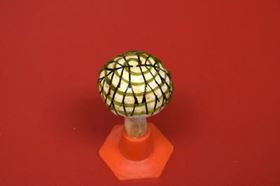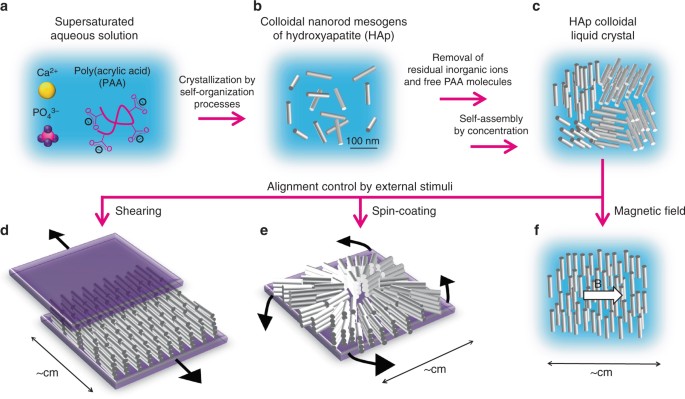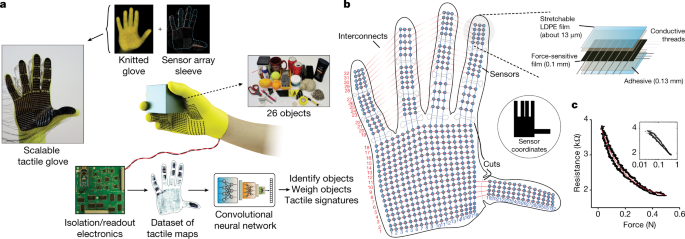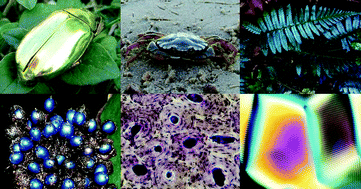| 类别: | 全部 文献论文 科研工具 产品技术 书籍教程 软件 |
| 主题: | 全部 生物质基 柔性智能 环保低碳 |
-
 Researchers at the Stevens Institute of Technology in New Jersey, USA, have produced electricity from mushrooms in a process involving bacteria and swirls of graphene nanoribbons. The ‘bionic’ mushrooms are actually......
Researchers at the Stevens Institute of Technology in New Jersey, USA, have produced electricity from mushrooms in a process involving bacteria and swirls of graphene nanoribbons. The ‘bionic’ mushrooms are actually...... -
 Inspired by the extraordinary characteristics of polar bear fur, lotus leaves and gecko feet, engineering researchers have developed a new way to make arrays of nanofibers that can form coatings that are sticky, re......
Inspired by the extraordinary characteristics of polar bear fur, lotus leaves and gecko feet, engineering researchers have developed a new way to make arrays of nanofibers that can form coatings that are sticky, re...... -
Progress towards the integration of technology into living organisms requires electrical power sources that are biocompatible, mechanically flexible, and able to harness the chemical energy available inside biological systems. Conventional batt......
-
 Liquid crystals are mostly formed by self-assembly of organic molecules. In contrast, inorganic materials available as liquid crystals are limited. Here we report the development of liquid-crystalline (LC) hydroxya......
Liquid crystals are mostly formed by self-assembly of organic molecules. In contrast, inorganic materials available as liquid crystals are limited. Here we report the development of liquid-crystalline (LC) hydroxya...... -
 In the never-ending quest to create robots that are ever more capable, roboticists have often been inspired by creatures that nature has designed. Attempting to mimic humans is a popular research area, as is copying ......
In the never-ending quest to create robots that are ever more capable, roboticists have often been inspired by creatures that nature has designed. Attempting to mimic humans is a popular research area, as is copying ...... -
Liquid crystals play an important role in biology because the combination of order and mobility is a basic requirement for self-organisation and structure formation in living systems. Cholesteric liquid crystals a......
-
 Complexity in nature, whether in chlorophyll or in living organisms, often results from self-assembly and is considered particularly robust. Compact clusters of elemental particles can be shown to be of practic......
Complexity in nature, whether in chlorophyll or in living organisms, often results from self-assembly and is considered particularly robust. Compact clusters of elemental particles can be shown to be of practic...... -
 Colonies of social insects are capable of self-organizing and accomplishing complex tasks through individual interactions. For example, to march across large gaps, ants grip the bodies of each other, forming a living br......
Colonies of social insects are capable of self-organizing and accomplishing complex tasks through individual interactions. For example, to march across large gaps, ants grip the bodies of each other, forming a living br...... -
 Humans can feel, weigh and grasp diverse objects, and simultaneously infer their material properties while applying the right amount of force—a challenging set of tasks for a modern robot1. Mechanoreceptor networks that p......
Humans can feel, weigh and grasp diverse objects, and simultaneously infer their material properties while applying the right amount of force—a challenging set of tasks for a modern robot1. Mechanoreceptor networks that p......
发新帖

iThinkScene
Al工具集
AINavi
Sci-hub(论文下载)
Researcher(最新论文阅读)
二维名片
NanoBio Device Lab
Chemistry Links
CAS National Science Library
透射电镜教学
Circular Dichroism教学
Sciencedaily
ETHZ科技新闻
MIT科技新闻
Newatlas材料
Nanomateirals@phys
Materialstoday
单位换算
物理常数
元素周期表
物化性质索引
化学反应reaxys
维普期刊
CNKI
web of science
EI
SciFinder
Crossref搜索
Google Scholar
Adolphe Merkle Institute
影响因子查询
Physcisworld
Pdf压缩
化学计算器
Teaching@Materials Science
考拉图书馆

聚集生物基纳米材料、柔性智能材料、轻量化材料领域最新的研究进展、产业技术与发展动态!
声明:本网内容以交流传递科技信息为目的。若侵犯了您的合法权益,请您持权属证明信息联系,我们将及时更正。
友情链接

